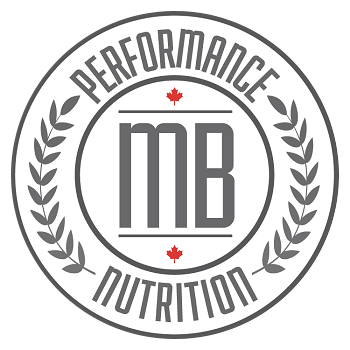Last updated on January 11th, 2024
What are BCAAs?
Protein is made up of building blocks called amino acids. Branched-chain amino acids (BCAAs) include leucine, isoleucine and valine. They provide the basis for protein synthesis and energy production and can make up to one-third of muscle protein.
BCAAs are considered essential amino acids because they cannot be made by the body and must come from food. While other amino acids are regulated by the gut and liver before being circulated elsewhere in the body, BCAAs are not degraded in the liver and head directly into the bloodstream.
While we are talking about essential amino acids (EAAs) there are 9 of them: histidine, isoleucine, leucine, lysine, methionine, phenylalanine, threonine, tryptophan and valine. As I mentioned above, these have to be ingested through food or supplements as the body can’t make them on its own.
BCAAs, as you likely noticed, are a subset of the EAAs.
BCAAs and Exercise
For people with low dietary protein intake, BCAA or EAA supplementation can promote muscle protein synthesis and increase muscle growth over time.
Many people argue that since you ingest BCAAs each time you ingest protein, supplementing with BCAAs in isolation is mostly redundant.
While that IS somewhat true, there are other benefits and specific uses for OCR athletes. (Hence why it’s important to get your OCR nutrition advice from reputable sources, not bodybuilders in the gym).
Supplementing with BCAAs during endurance exercise can do one of three things.
- It can blunt muscle fatigue
- It can reduce muscle protein breakdown
- It can contribute to energy production
Supplementing BCAAs prevents a serum decline in BCAAs, which occurs during exercise. A serum decline would normally cause a tryptophan influx into the brain, followed by serotonin production, which causes fatigue.
A decrease in fatigue results when BCAA supplementation is taken during exercise at a dose above 10g or so.
BCAAs were found to relieve cognitive fatigue during exercise lasting more than 2 hours. In novice athletes, the reduction in mental fatigue might also translate into an increase in physical endurance.
An increase in time to exhaustion appears to exist in prolonged endurance exercise, but this benefit may only exist in untrained or lightly trained individuals. Several studies have noted that the anti-fatigue effects and increased time to exhaustion do not really occur in advanced athletes
In prolonged exercise and somewhat related to the antifatigue effects, an increase in fat oxidation is noted with BCAA supplementation; this is thought to be related to the glycogen preserving effects of BCAAs.
BCAAs assist in maintaining blood sugar levels and can provide up to 40 percent of blood sugar production during exercise. This becomes even more important during long exercise when glucose and glycogen levels become depleted, or during really intense bouts of exercise.
Consuming protein in the form of BCAAs or EAAs during exercise helps prevent muscle breakdown which can lead to improved recovery and greater adaptation to training over the longer term. This becomes even more important if it’s been more than three hours since your last meal.
During OCR events, muscle breakdown is a bigger concern than in typical endurance sports. Chances are, you’re going to lose more protein than you rebuild, so consuming adequate BCAAs during a race will enhance protein synthesis.
Why not just use protein powder?
BCAAs have two potential advantages over protein powders.
They are less likely to cause cramping or nausea when consumed before or during exercise and they are free of tryptophan (an amino acid that might promote exercise-related fatigue).
Supplementing with BCAAs or EAAs
First, it’s important to note that most protein/amino acid scientists have long recognized that supplementing with all 9 EAAs might have important effects on protein synthesis, recovery, and other outcomes in certain situations.
But because manufacturers couldn’t make EAAs in a cost-effective or palatable way, they settled for making the 3 BCAAs and that’s what flooded the market.
With the latest research and availability, I would recommend taking EAAs over BCAAs. That’s not to say BCAAs are worthless. But they aren’t as powerful as some people have marketed them to be.
For every hour of training, add 15 g of EAAs or BCAAs into your workout drink. During races, stick to 5 g per hour to avoid gastrointestinal distress.
During cycles of low-calorie intake (off-season phase and prep phase), you can supplement with BCAAs or EAAs every 2-4 hours.
Basically, if you are doing long, intense training bouts or multiple training sessions per day, or you are trying to make significant changes to your body composition, BCAAs or EAAs are an appropriate supplement strategy.
If you’re not a consistently good eater, BCAAs and EAAs are not going to be a magic solution. If you’ve worked with a Nutritionist to eliminate nutrient deficiencies, have gotten your total food intake in check and are eating right for your body type and activity levels, then BCAAs/EAAs could make a real difference in your adaptation and recovery.
Also note, unflavoured BCAAs are repulsive. I learned that the hard way. However, MOST BCAA supplements are full of junk, that in my opinion, completely defeat the purpose of optimal performance. If you want a flavoured BCAA supplement, look for one that is flavoured and sweetened naturally.
I recommend Xymogen XymoBolX. This is what we use in our home and what many of my clients end up using.
References:
LINK: http://www.precisionnutrition.com/fix-a-broken-diet
LINK: https://pubmed.ncbi.nlm.nih.gov/21297567/
LINK: https://pubmed.ncbi.nlm.nih.gov/1748109/
LINK: https://pubmed.ncbi.nlm.nih.gov/7473239/
LINK: https://pubmed.ncbi.nlm.nih.gov/9124069/


